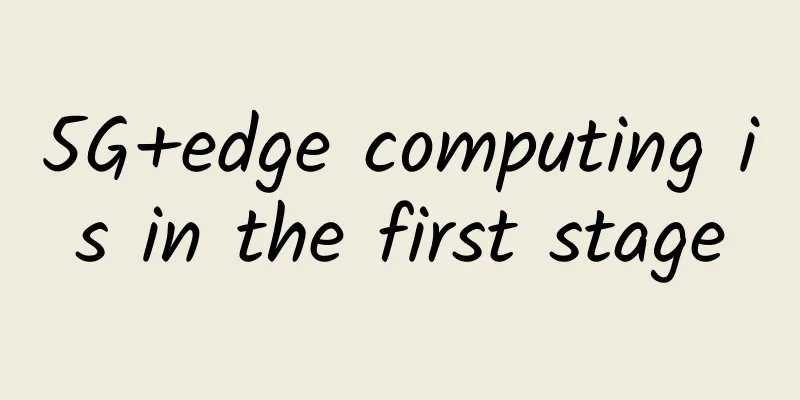What exactly is RedCap?

|
With the freezing of 3GPP R17, a new term has gradually become popular, that is RedCap. What is RedCap? Why is it introduced? What is the difference between it and the current 5G? Let's take a look at Xiaozaojun's in-depth analysis... What is RedCapRedCap, the full name of which is Reduced Capability, means "reduced capability" in Chinese. It is a new technical standard specially researched by 3GPP in the 5G R17 stage. You may be unfamiliar with the name RedCap, but you may have heard of its previous name, NR light (NR lite). To put it simply, RedCap is a lightweight 5G. It is worth mentioning that some domestic articles say that the full name of RedCap is Reduced Capacity. This is obviously wrong. Capacity means capacity and Capability means ability. Why is there RedCap?5G is already well developed, so why do we need a lightweight version? Here are the reasons: As we all know, 5G is divided into three major application scenarios, namely eMBB (enhanced mobile broadband), uRLLC (ultra-low latency and highly reliable communication), and mMTC (massive machine type communications). eMBB is an upgrade of MBB (mobile broadband) in the 4G era, focusing mainly on indicators such as network speed, bandwidth capacity, and spectrum efficiency. The 5G mobile communications we are currently using belong to the eMBB scenario. As for uRLLC and mMTC, the former focuses on reliability and latency, while the latter focuses on the number of connections and energy consumption. Both mainly serve the industrial Internet, including industrial manufacturing, Internet of Vehicles, remote meter reading and other vertical industry fields. I have told you before that the application scenarios of the Internet of Things are extremely complex and diverse. Different scenarios have different requirements for network indicators. Taking speed as an example, VR/AR and high-definition broadcasting require high-speed connections, but remote meter reading (water meter, electricity meter) and shared bicycle synchronization data only require low speed. Compared with speed, many application scenarios are more concerned with power consumption and cost. After so many years of development, the Internet of Things has formed three categories: high speed, medium speed and low speed: "631" structure If we include the increasingly popular passive IoT (ultra-low rate), there are four categories: 5G alone cannot meet all needs. Therefore, at this stage, 5G and 4G are working together. Even 2G and 3G are helping. As 2G and 3G are phased out, most 2G and 3G IoT services will migrate to LTE Cat.1, LTE Cat.4 and NB-IoT. That is, 4G and 5G will dominate the world. So the question is, what should we do if 4G is phased out in the future? Or, if a new operator is established, will it have to build a 4G network in addition to 5G? Therefore, 5G must consider the long-term and build a lightweight version to cover the current LTE Cat.1 and Cat.4 needs, that is, medium-speed and medium-high-speed needs. So, RedCap was born. In other words, NB-IoT/eMTC is a castrated version of 4G, while RedCap is a castrated version of 5G. In terms of technical characteristics, RedCap is between eMBB (ultra-wideband) and LPWA (low-power wide area network, NB-IoT, etc.). RedCap mainly targets applications that have requirements on bandwidth, power consumption, cost, etc. based on eMBB and LPWA. Its bandwidth rate is lower than eMBB, but much higher than LPWA. Its power consumption and cost are higher than LPWA, but much lower than eMBB. RedCap's capabilities are very "balanced" (the yellow line is RedCap). Another driving force behind the birth of RedCap is the cost issue of 5G terminal chips and modules. The design of the complete 5G terminal chips and modules is extremely complex, the R&D threshold is extremely high, and the investment cost is huge. Their prices have also remained high (500-1000 yuan). The high price has affected the implementation of 5G in vertical industries, as users are unwilling to spend so much money. Therefore, developing a lightweight 5G is also to reduce the cost of 5G deployment and use in scenarios where the requirements for speed and latency are not so high, better serve users, and accelerate the implementation of 5G. How does RedCap achieve low costs?Now let’s come to the key part of this article, how exactly RedCap was castrated and reduced. The table below shows the main differences between 5G RedCap devices and 5G traditional devices. Original image from Ericsson (translated by Xianzao Classroom) First, RedCap has a smaller spectrum bandwidth. In the Sub-6GHz band, RedCap's bandwidth is 20MHz, which is smaller than the 100MHz of traditional 5G. Secondly, RedCap reduces the number of transmit and receive antennas and the number of MIMO layers. For the Sub-6GHz frequency band, the receiving links of the RedCap terminal can be reduced to 1 or 2, and the corresponding downlink MIMO is reduced to 1 or 2 layers of reception. This reduces the requirements for the terminal's RF transceiver and baseband processing module. Third, RedCap uses a simpler modulation method called 64QAM, which also means that the requirements for RF and baseband are greatly reduced. Fourth, RedCap uses half-duplex FDD (HD-FDD), which can transmit and receive at different frequencies at different times without the need for a duplexer. This not only saves costs, but also achieves better integration capabilities (duplexers are generally larger), reduces the space occupied by equipment, and is conducive to the miniaturization of equipment. Fifth, RedCap has introduced some power-saving measures, such as enhanced discontinuous reception (eDRX) and longer sleep modes, which allow terminals to reduce power consumption and achieve longer battery life. Based on the above changes, it is predicted that RedCap will be 60% less complex than 5G public network terminals, and the cost will be reduced by about 70% on the baseband and RF sides. Some even say that the overall cost of RedCap can be reduced by 2-5 times, or even 7-8 times. Although RedCap has been severely degraded, its basic performance is still retained. It can be smoothly upgraded and introduced based on the existing 5G network without major changes to the existing network. After talking about the good, let's talk about the bad. What did RedCap lose? The first is the rate. As the terminal bandwidth decreases, MIMO reception becomes simpler, and the highest modulation order decreases, the peak rate of RedCap will also drop significantly. The specific rate value varies according to the number of antennas and frame structure. Please refer to the following table: RedCap uplink and downlink peak rate reference (from 5G RedCap technology white paper) In terms of coverage capability, due to the reduction in antenna design and the size limitation of wearable terminals, the coverage capability has been slightly reduced. In terms of transmission delay, HD-FDD cannot send and receive at the same time, so the transmission delay will increase. However, for RedCap's application scenarios, these problems do not have much impact. It is worth mentioning that, considering the application scenarios and costs, 3GPP proposed that RedCap can only work in one frequency band at a time, and does not need to support carrier aggregation or dual connectivity. (Of course, early RedCap terminals must be dual-mode, after all, 5G coverage is not perfect.) I almost forgot to mention the price. According to forecasts, the price of RedCap's modules will be controlled between 100-200 yuan (RMB), which is much lower than the current 5G modules that cost several hundred yuan, but higher than the NB-IoT modules that cost several dozen yuan. RedCap's typical business scenariosCurrently, according to the standard definition of 3GPP R17, RedCap supports three major business scenarios: wearable devices, industrial sensors and video surveillance. The specific network requirements for these three scenarios are shown in the following table: Original image from Ericsson (translated by Xianzao Classroom) Wearable devices, such as smart watches. At present, mainstream smart watches on the market only support 4G, not 5G, because 5G chips are too expensive, generate a lot of heat, and the high rate of eMBB is a bit redundant for the screen size of the watch. The use of RedCap can fully meet the video call needs of smart watches. Not only is the downlink bandwidth sufficient, but the uplink bandwidth is also much higher than LTE Cat.1. In addition, RedCap can also meet the needs of smart watches in terms of size and power consumption. Let’s look at industrial sensors. You may be unfamiliar with industrial wireless sensors. There are many categories of industrial wireless sensors, including pressure sensors, humidity sensors, motion sensors, thermometers, accelerometers, drivers, and so on. These sensors are widely used in the industrial field and in huge quantities. They have slightly higher reliability requirements, about 99.99%. However, the latency requirements are not high, within 100ms. The speed is generally no more than 2Mbps. There is no doubt that RedCap can satisfy. Finally, there is video surveillance. Video surveillance is a widespread IoT demand that is everywhere around us. Many people think that 5G is needed for video surveillance. In fact, video surveillance is also divided into many categories. Some are 4K/8K ultra-high-definition, high-end surveillance (7.5-25 Mbps). Some are high-definition or standard-definition, which are economical surveillance (2-4 Mbps). In actual applications, economical video surveillance accounts for a larger proportion. These do not require 5G. LTE Cat.1/Cat.4 and our RedCap are enough. In addition to the above three scenarios, RedCap can be applied in many other places, such as smart logistics, smart electricity, smart inspection, smart manufacturing, etc. According to the forecast data of major market consulting agencies, by 2025, the terminal scale of domestic wearable, video surveillance and power industry will reach tens of millions. For RedCap, the market prospect is broad. When will RedCap be commercially available?In June 2019, at the 3GPP RAN #84 meeting, RedCap was first presented to the public as an R17 Study Item. In March 2021, 3GPP officially approved the NR RedCap UE standardization (i.e. Work Item) project. Now, on June 9, 2022, 3GPP R17 is frozen, which means that the standardization of RedCap R17 is completed. According to experience, it takes at least 1-2 years after standardization to achieve initial industrialization. Therefore, it is expected that by the middle of 2023 (or early 2024), we will see early commercial products of RedCap. Please note that the standardization of RedCap has not been completely completed. In December 2021, the standardization of 3GPP R18 RedCap has been launched. 3GPP RedCap standardization work progress (from 5G RedCap technical white paper) The goal of R18 RedCap is to benchmark Cat.1/1bis, further reduce terminal complexity, and achieve the ultimate simplification of RedCap terminal complexity. In other words, RedCap technology still has a long way to go in the future. Well, that’s all about RedCap. Thank you for your patience and see you next time! |
>>: If you don’t understand, just ask, how can you make your home internet speed faster?
Recommend
360 Wang Yangdong: IOT devices require all-round security protection, and every detail cannot be ignored
[51CTO.com original article] On December 1-2, 201...
The three major operators collectively experienced a "late spring cold" in February: 4G business performance was poor and broadband market growth was weak
Perhaps it was because the performance in January...
Why is millimeter wave the only way to the 5G era?
According to the 3GPP agreement, 5G networks will...
What are the six components of structured cabling?
The six major components of structured cabling ar...
If WeChat declines, who will replace it? Big guesses about the Internet in 2018
Where will the major domestic Internet companies ...
Have you learned how to build the CC2530 development environment?
1. Introduction to IAR ZigBee Wireless Network No...
12 Myths About Blockchain Technology
Blockchain, the distributed ledger technology, ha...
The Internet can also get stuck?! There are three magic weapons to solve it!
Highways will be congested, and the Internet, the...
DogYun German CUVIP line cloud server simple test
How about DogYun? I just had a little bit of prep...
Multicast Protocol: The "Group Chat Master" of the Internet World
Fans who love to think, have you ever had these c...
[6.18] CMIVPS recharge gift 20%, Hong Kong high bandwidth VPS monthly payment 20% off / annual payment 30% off
CMIVPS has launched a special promotion for 6.18....
DogYun celebrates the 25th anniversary of Hong Kong's return to China. Hong Kong server is available for 2 months at 450 yuan, dual E5/32G/1TB SSD/20M bandwidth
DogYun has launched a special promotion for the 2...
The important thing in wireless in 2020 may not be 5G
With all the hype and anticipation surrounding 5G...
Microsoft has scrapped plans to use IPv6 only on its internal network
[[244105]] Microsoft has scrapped plans to use on...





![[Black Friday] CloudCone: Los Angeles VPS from $16.79/year, Premium SC2 from $32.94/year](/upload/images/67cabff9214b9.webp)



